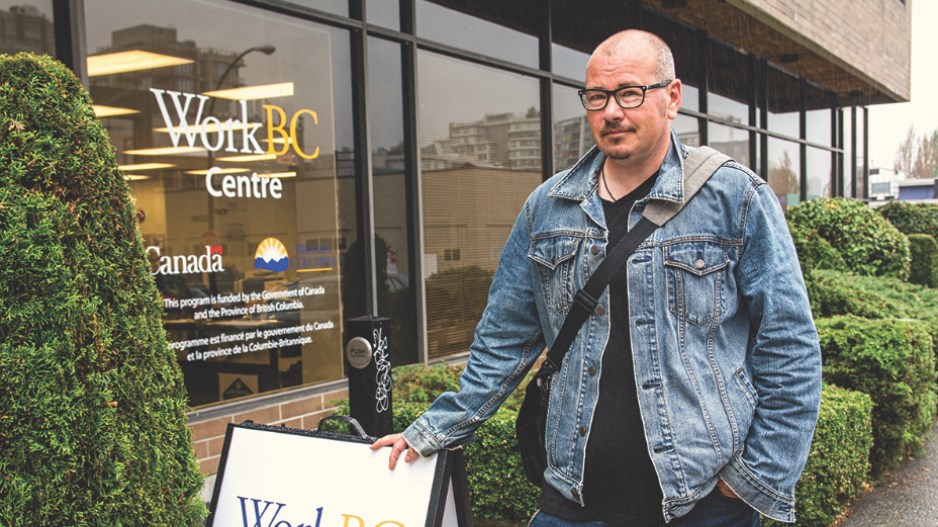Every time KC Pearcey goes to a job interview, he has to decide whether to disclose his disability to his potential employer.
After the disappointment of endless rejections, Pearcey rarely discloses it anymore.
“When I let them know I have mental health issues, I don’t generally hear back from jobs I’ve been applying for. I get treated like a normal person if I don’t tell them.”
Pearcey added that employers don’t react to his disability disclosure during the interview for fear of being accused of discrimination. However, potential employers aren’t always able to disguise that they’re not interested in hiring people with disabilities.
“Let’s say you’re a wheelchair user and you’ve been to 15 interviews and the second you wheel in, you know you don’t have a chance because people’s faces change when they see you in a wheelchair,” said Craig Richmond, president and CEO of the Vancouver Airport Authority. “You stop trying.”
The unemployment rate for people with disabilities is more than double that of people without disabilities, according to Statistics Canada. While B.C. has reduced the unemployment rate among people with disabilities, Alona Puehse, COO of Open Door Group, an organization with the goal of making workplaces more inclusive, said there’s still a long road ahead.
Business leaders, employees with disabilities and organizations looking to solve this issue all seem to agree that a two-pronged approach is needed to tackle the problem. First, governments and businesses need to create policies that will make it easier for people with disabilities to enter the workforce.
But perhaps more important than policy is changing hearts and minds. While Pearcey sees a role for both, if he could snap his fingers and change one thing tomorrow, it would be to shift attitudes.
“I think there needs to be a broader change in society,” said Pearcey. “And I don’t know how that comes about because there’s just a lot of judgment, misinformation and stigmatization, especially when it comes to mental health issues; there’s just so many barriers.”
Kirsten Sutton, vice-president and managing director at SAP Labs Canada, agreed. She stressed that the No. 1 challenge is persuading all businesses that hiring people with disabilities can add value to their organization.
SAP first started hiring people with disabilities in 2013 with the launch of its Autism at Work program. The SAP program had expected to hire people with autism for pattern recognition or data science roles. But the company soon discovered that applications from those with disabilities were coming in for all types of positions from marketing to customer support. Today, the company has people with disabilities working across 100 different types of teams contributing to 23 different types of roles around the globe.
Puehse said that while the business community is taking a positive step by becoming more inclusive, it’s important for it to recognize that people with disabilities need to be assessed as individuals with unique talents.
According to statistics gathered by the Presidents Group, an association of business leaders, including Sutton and Richmond, inclusive companies are twice as likely to meet or exceed financial targets and six times as likely to be more innovative and effectively anticipate change. People with disabilities tend to be better employees. Their job retention rate is 72% higher, and 86% have an attendance record that is the same or better than employees without reported disabilities. However, Puehse said, it’s important to avoid turning these employment statistics into new stereotypes.
Employers’ preconceived notions were changed once they started hiring people with disabilities. Sutton, for instance, thought that the accommodations SAP would have to make would require significant time and resources, but they were much less trouble than expected.
But perhaps the biggest surprise for SAP was how much everyone benefited from the changes.
“Things that just make for a better environment for people on the autism spectrum were much better for everyone,” said Sutton. “We’re finding everyone is happier as a result of this program.”
The more inclusive environment has also made other employees more comfortable disclosing their disabilities.
Making a business more inclusive opens up its customer base to a new segment of the population, Pearcey said.
Sutton and Richmond agreed. They said a more inclusive workplace expanded their customer base.
Richmond said untapped or underused resources in B.C.’s economy aren’t limited to what’s in the ground. B.C. businesses, customers and communities, he said, are missing out on what people with disabilities could be offering the province.
“What I found most difficult and disappointing is people with really good qualifications – CPA, engineers, commerce grads that have finished in the top of their class – have given up.” •




